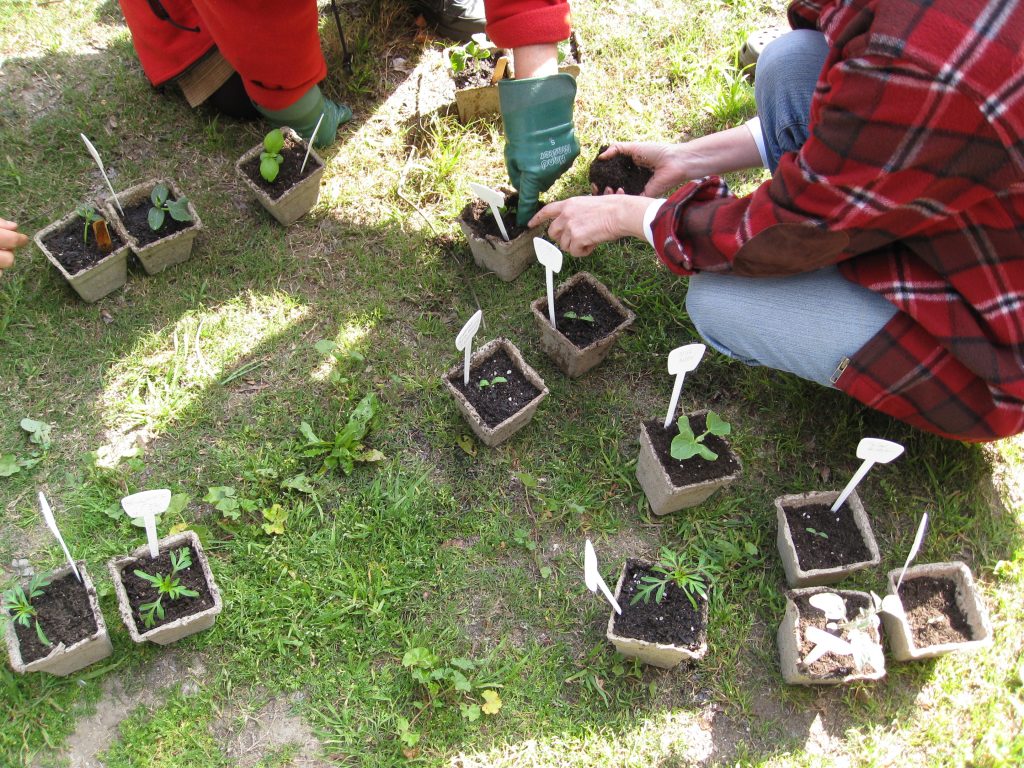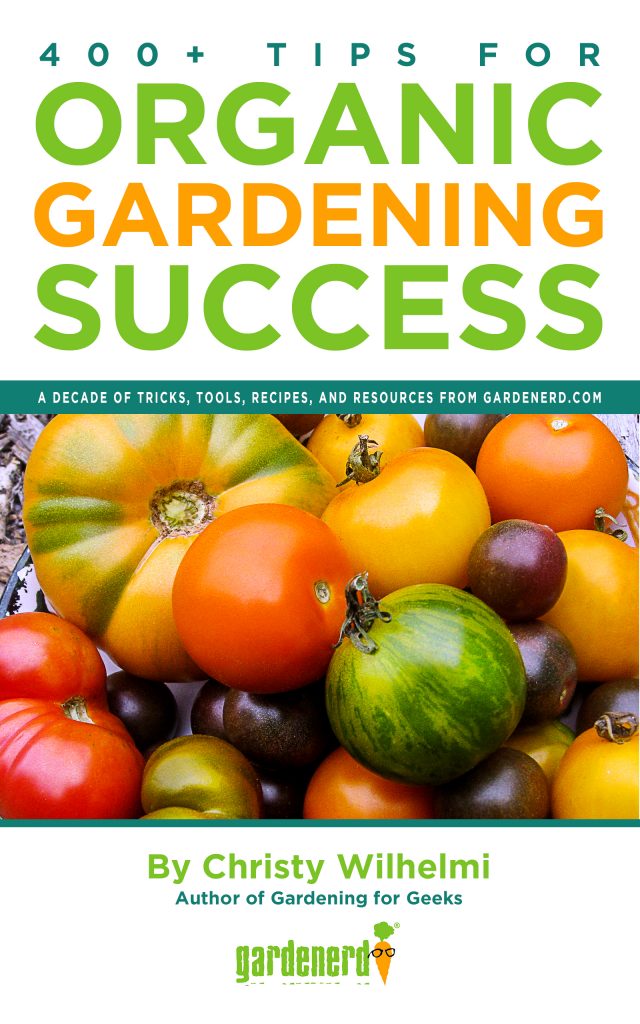
In this issue:
- September in the Garden
- Upcoming Classes
- Gardenerd Tip of the Month: Fall Planting Guide
- Gardenerd Product of the Month: 400+ Tips for Organic Gardening Success
September in the Garden
Fall has arrived! We’ve rounded the corner to autumn this week, and the garden shows it. Crops are dying back, the harvest is thinning, and it’s time to turn over a new leaf. Whether you put your garden to bed for winter, or add compost to prep for fall crops, change is in the air.
In our Test Garden, we’re pulling spent plants like cucumbers, long beans, squash, and arugula. We’re starting seeds for brassicas, and ordering garlic, onion transplants and bare root fruit trees online. In the coming weeks we’ll harvest honey, and we’ll prune back cane berries. There’s no rest for the gardener this fall, and the excitement for fall gardening is palpable.
Need help with your fall garden? Check out our Fall Planting Guide below. You’ll be eating broccoli, carrots, and peas before you know it.
Happy Gardening,
Christy

2. Upcoming Classes
We’ve got one more Fall Garden Planning Workshop in October, and our Santa Monica College Course starts next weekend. Here are the details:
Fall Garden Planning Workshops – Learn Christy’s tried and true process for plotting out your garden each season. You’ll leave with a map of what to plant where and you’ll know how to repeat the process every year. Two dates to choose from. Details and registration here.
Basic Organic Gardening – Christy’s popular Santa Monica College course starts October 6th. Learn what you need to know for a successful garden this fall. Find details and registration for this 4-class course here.
It’s time to transition to fall gardening (in warm-winter climates). Join us for these great classes and get growing!
3. Gardenerd Tip of the Month – Fall Planting Guide

Each year in September we publish our Fall Planting Guide. The following crops grow best in cool weather (which for southern, coastal, or warm-winter climates is fall/winter):
Fall Planting Guide
Lettuces – all sorts of gorgeous greens grow best in fall. We plant 14 varieties in October, then again in spring. Start seeds indoors in early to mid-September for October planting.
Peppery Greens – add some spice to your salads with mustard greens and arugula. They won’t bolt to seed like they do in spring.
Other Salad Stuff – try your hand at mache (A.K.A. corn salad for some reason), radicchio, and endive for some added interest. Chard grows well in fall and spring, if you have room for it. Spinach is a must for fall gardens.
Brassicas – broccoli, cauliflower, cabbage, collards, kale, Brussels sprouts, kohlrabi and turnips fall into this family. You’ll find few to no aphids on fall-grown brassicas. Just keep floating row cover handy to keep the cabbage moth at bay.
Root Crops – carrots, parsnips, beets, potatoes, and radishes all grow best in cooler temps. If you’ve had trouble growing these in spring, try fall. It’s just better.
Grains – wheat, quinoa, rye, triticale, amaranth, oats, and more – these grains can be grown as a cover crop or harvested in spring for good eating. Be adventurous! Give grains a try.
Bulb Veggies – onions, garlic, and shallots go in this fall. They’ll grow through winter into spring and will be ready to harvest in late spring/early summer. If that’s too much of a commitment, just grow green onions. They’re ready to pick in no time.
Vines – sugar snap and snow peas almost grow by themselves in fall. There’s nothing like snacking on them straight out of the garden on a cool late-winter morning. Frosty folks may find these too tender for cold-winter gardens.
Herbs – most herbs (except basil) do great in cooler weather. Cilantro and parsley won’t bolt to seed as quickly as they do in spring. Dill, oregano, rosemary, thyme and sage can all be planted in the fall garden.
Cover crops – if you aren’t growing a fall garden, plant cover crops. Even if you are growing a fall garden, plant cover crops. Fava beans, vetch, oats, peas; these all help build soil and some fix nitrogen. This is food for your compost bin. It means less work for you in the long run with great soil as the result. We dedicate at least 1 raised bed to cover crops each fall.
Perennials – late fall is planting time for perennials like strawberries, asparagus, artichokes, rhubarb, and cane berries. Many bare-root fruit tree growers take orders in October for January delivery. Plan ahead (and order ahead) if you’re going to put in bare root plants or trees this fall.
Enjoy these delights in your garden this fall/winter. It’s the easiest time to grow crops in warm-winter climates. Rain, cooler temps, fewer bugs. What’s not to love!
4. Gardenerd Product of the Month – 400+ Tips for Organic Gardening Success
Now that fall has arrived, pick up a digital copy to get ready for fall gardening. You’ll learn tips and tricks from 10 years of Gardenerd Tips of the Week all in one place.
Stay tuned for more tips and tidbits from Gardenerd.com. Happy fall gardening!

Search our archives here.


